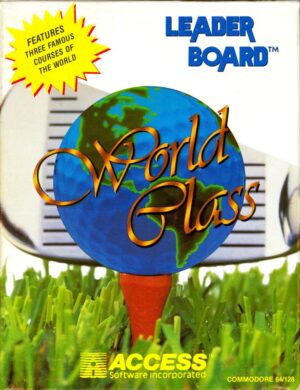Retro Replay Review
Gameplay
Oriental Hero picks up where Ninja Master left off, trading in stealthy swordplay for a pure martial arts showdown. Players control a disciplined fighter navigating a four-round tournament set against the windswept steppes of Outer Mongolia. Each round culminates in a one-on-one duel with a formidable opponent: first you face the Indian Cobra for 300 points, then a heavily armored war unit at 400 points, followed by a cunning Russian Master at 500 points, and finally the enigmatic Zerwin the Magician for the coveted Oriental Hero title. The progression feels smooth, with each champion introducing new patterns and attack styles that keep the difficulty balanced yet challenging.
The combat system is simple but satisfying. You have a selection of punches, kicks, and defensive blocks—no elaborate fireball projectiles or energy meters to manage. This focus on fundamentals emphasizes timing, spacing, and strategy. Learning when to close the distance for a sweep kick or when to back off and guard against a spinning strike from your opponent adds depth to otherwise straightforward mechanics. The responsive controls ensure that combos and counters feel precise. Mistiming an attack often leads to a harsh counterpunch, so mastery requires patience and practice.
Replay value stems from trying to perfect each round without losing a single health point. In addition to standard matches, a two-player mode lets friends go head-to-head with identical move sets, turning your living room into a competitive dojo. While there are no hidden unlockables or branching paths, the escalating difficulty curve and the satisfaction of flawless victories give Oriental Hero lasting appeal for martial arts enthusiasts and retro gamers alike.
Graphics
While Oriental Hero does not push the hardware envelope, its pixel art is clean and purposeful. Character sprites are well proportioned and animations flow smoothly—each punch, kick, and block motion is clearly readable, which is crucial for a timing-based fighter. The four tournament arenas each sport a distinct backdrop: windswept grasslands, rocky outcrops, misty lakeshores, and finally a foreboding temple courtyard for the showdown with Zerwin the Magician.
The color palette leans on earthy tones—sandy browns, slate grays, and muted greens—evoking the rugged Mongolian setting. Occasional flashes of red and blue on fighter outfits help the competitors stand out against the backgrounds. Though there are no elaborate particle effects or dynamic lighting, the game uses simple visual cues effectively. Sparks fly when kicks connect, and a quick flash highlights each successful block. These touches add drama to every exchange.
Transitions between rounds are handled with brief cutscenes showing your fighter bowing to the crowd or opponents preparing their signature stance. These small details, while limited by hardware, lend a polished air to the overall presentation. The UI is uncluttered: health bars sit at the top corners, and round indicators are clearly displayed. In short, Oriental Hero’s graphics serve the gameplay purposefully, ensuring nothing distracts from the martial arts action.
Story
True to its arcade-fighter roots, Oriental Hero keeps narrative elements to a minimum. The premise is simple: prove yourself as the ultimate martial artist by defeating four internationally renowned champions in Mongolia. There’s no lengthy dialogue tree or cutscene epic—just a clear objective that underscores the game’s “straight to the action” approach. This directness may disappoint players seeking a deep storyline, but it will please those who just want to punch, kick, and win.
Flavor text before each bout offers brief backstory on your opponent—how the Indian Cobra uses lightning-fast strikes, how the war unit relies on brute strength, and how the Russian Master blends disciplined technique with cunning feints. Zerwin the Magician’s origin is shrouded in mystery, hinting at exotic training methods and arcane momentum-based maneuvers. These snippets create enough intrigue to make each match feel like a new chapter in your tournament journey.
Moreover, the Outer Mongolia setting brings a fresh twist to the series. Instead of dojo interiors or neon-lit second-world cities, you fight in open plains dotted with yurts and ancient stone altars. Although there’s no branching narrative or moral choice, the cultural flair and minimal storytelling do just enough to provide context for your hero’s ascent to the Oriental Hero crown.
Overall Experience
Oriental Hero delivers a tight, old-school fighting game experience that emphasizes skill and timing over flashy special moves. Its approachable control scheme and clear visual feedback make it ideal for newcomers to the genre, yet the steadily increasing challenge keeps seasoned fighters engaged. The four-champion tournament structure builds excitement naturally, culminating in the final test against Zerwin the Magician.
Audio design complements the visuals with rhythmic traditional percussion and tense musical cues that rise with the action. Sound effects are crisp: a thwack on a solid kick, the clang of a well-timed block, and a victorious fanfare when you overcome the champion. Though the soundtrack loops, it’s varied enough to maintain atmosphere across multiple rounds.
As a sequel to Ninja Master, Oriental Hero successfully pivots from ninja fantasy to raw martial arts competition. It may lack narrative depth or advanced graphical spectacle, but its core combat is rock-solid. For fans of retro fighters and those who appreciate a no-frills tournament brawler, Oriental Hero offers satisfying, punchy bouts and a genuine sense of achievement with every champion you topple.
 Retro Replay Retro Replay gaming reviews, news, emulation, geek stuff and more!
Retro Replay Retro Replay gaming reviews, news, emulation, geek stuff and more!








Reviews
There are no reviews yet.